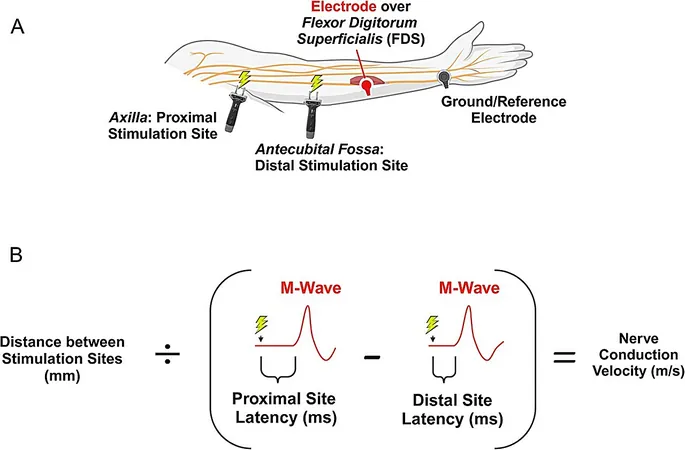
Astronomers Debunk Mysterious Radio Burst: Was It Really from Deep Space?
2025-06-25
Author: Daniel
In a surprising twist, astronomers have discovered that what they initially thought was a far-off celestial phenomenon—a powerful radio burst—was actually the signal from a long-defunct NASA satellite named Relay 2.
Detected by the Australian Square Kilometer Array Pathfinder (ASKAP) in June 2024, this brief burst lasted less than 30 nanoseconds, far shorter than most fast radio bursts (FRBs). It was so immensely powerful that it overpowered all other cosmic signals during the telescope's observations.
"This was a chance discovery made while searching for FRBs known to originate in distant galaxies," said Adam Deller, an astrophysicist from Swinburne University of Technology. FRBs have mystified scientists since their first detection in 2007, with most theories linking them to 'magnetars,' extraordinarily magnetized neutron stars.
A Glimpse into Space History
Relay 2, launched in 1964, played a pivotal role in the early days of satellite communication. Although it ceased operation in 1965, it was still floating around Earth when the ASKAP detected this puzzling signal. Clancy W. James from Curtin University noted that while Relay 2 is a piece of space history, its capabilities were far too limited to produce the sharp nanosecond signal detected by ASKAP.
What makes this situation even more intriguing is that Relay 2 was located just 2,800 miles (4,500 kilometers) from Earth, dwarfing the astronomical distances of FRBs that can originate from billions of light-years away.
The Surprising Source of the Signal
Initially disappointing for scientists hoping to uncover new astronomical phenomena, this discovery revealed new challenges. Glowacki, an astronomer at the University of Edinburgh, found the detection exciting despite its mundane origin. "It was an interesting puzzle to nail down the source of such a bright signal from a relatively close object!" he explained.
The team suspects that the unfamiliar signal could be due to electrostatic discharge (ESD) or a micrometeorite impact. ESD, similar to static electricity shocks, could spark a brief but powerful burst of waves. However, previous data indicates that signals from such sparks typically last significantly longer than the 30 nanoseconds observed.
The Bigger Mystery: What Caused the Signal?
As scientists ponder the true source of this unusual transmission, they have not ruled out the possibility of a micrometeorite impacting the satellite. But again, such events would generally produce longer-lasting signals. Both theories remain intriguing, but ultimately, there’s a lack of definitive evidence.
The Implications for Astronomy
So why does this matter? It's critical for astronomers to discern between genuine astrophysical signals and those originating from satellites, particularly older ones that might still be transmitting inadvertently. James emphasized the necessity for improved monitoring techniques to safeguard against confusion.
Despite this unusual finding, James reassured fellow astronomers that there is minimal chance other FRBs detected elsewhere are simply satellite signals misidentified.
"The characteristics of FRBs typically show they are from distant galaxies. Our signal lacked that dispersion, indicating a much closer source," he noted.
This discovery may also open doors to better monitoring of satellite activity, aiding in the understanding of potential hazards caused by ESD.
A Bright Future for Satellite Monitoring
Deller concluded with optimism: "This unexpected signal provides an exciting avenue to explore. Detecting similar bursts could enhance our understanding of satellite systems and prevent potential damage from ESD.
As this research progresses, who knows what other cosmic questions will be answered or new mysteries unearthed? The universe continues to surprise us!



 Brasil (PT)
Brasil (PT)
 Canada (EN)
Canada (EN)
 Chile (ES)
Chile (ES)
 Česko (CS)
Česko (CS)
 대한민국 (KO)
대한민국 (KO)
 España (ES)
España (ES)
 France (FR)
France (FR)
 Hong Kong (EN)
Hong Kong (EN)
 Italia (IT)
Italia (IT)
 日本 (JA)
日本 (JA)
 Magyarország (HU)
Magyarország (HU)
 Norge (NO)
Norge (NO)
 Polska (PL)
Polska (PL)
 Schweiz (DE)
Schweiz (DE)
 Singapore (EN)
Singapore (EN)
 Sverige (SV)
Sverige (SV)
 Suomi (FI)
Suomi (FI)
 Türkiye (TR)
Türkiye (TR)
 الإمارات العربية المتحدة (AR)
الإمارات العربية المتحدة (AR)